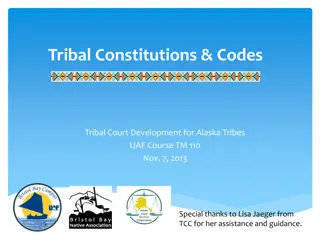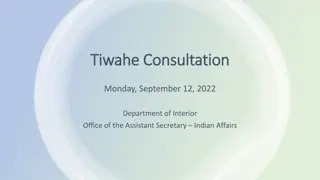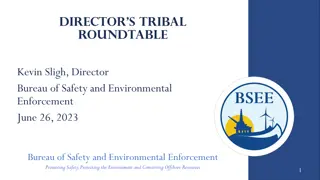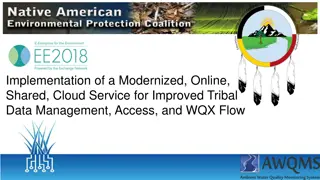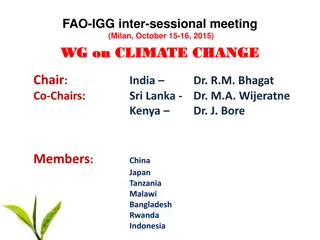Impact of Climate Change on the People of Pangi Tribal Tehsil in Chamba District
The people of Pangi Tribal Tehsil in Chamba District are facing the impacts of climate change, including changing weather patterns, rising sea levels, and extreme weather events. India's Western Himalayas are experiencing climate change effects, impacting ecosystems and human livelihoods. The study focuses on the geographical extent of Pangi Valley in Himachal Pradesh, India, to provide valuable insights for adaptation planning and resource allocation in the vulnerable Himalayan region.
Download Presentation

Please find below an Image/Link to download the presentation.
The content on the website is provided AS IS for your information and personal use only. It may not be sold, licensed, or shared on other websites without obtaining consent from the author. Download presentation by click this link. If you encounter any issues during the download, it is possible that the publisher has removed the file from their server.
E N D
Presentation Transcript
IMPACT OF CLIMATE CHANGE ON THE IMPACT OF CLIMATE CHANGE ON THE PEOPLE OF PANGI TRIBAL TEHSIL IN PEOPLE OF PANGI TRIBAL TEHSIL IN CHAMBA DISTRICT CHAMBA DISTRICT INTRODUCTION Climate change is now affecting every country on every continent. People are experiencing the significant impacts of climate change, which include changing weather patterns, rising sea level, and more extreme weather events. Climate change is one of the most important global environmental challenges of the present century. The IPCC report of 2007 concludes that climate change is projected to increase threat to human health, particularly in lower income countries. It will have implications on food production, water supply, air quality, coastal settlements and human health.
Continued India is both a major greenhouse gas emitter and one of the most vulnerable countries in the world to projected climate change. The country is already experiencing changes in climate and the impacts of climate change, including water stress, heat waves and drought, severe storms and flooding, and associated negative consequences on health and livelihoods. This study provides background information on India s Western Himalayas and reviews evidence of warming as well as variability in precipitation and extreme events. Understanding and anticipating the impacts of climate change on Himalayan forest ecosystems and the services they provide to people are critical. Climate changes impacts are commonly negative than positive on ecosystem, biodiversity.
REVIEW OF LITERATURE The Indian Himalayan region is home to about 51 million people, many of whom practice hill agriculture in fragile and diverse ecosystems, including species-rich forests. The region has a considerable hydropower potential and feeds numerous perennial rivers which depend upon the sustainable existence of glaciers (GoI2010, DST 2012). Due to its high biological and socio-cultural diversity, the region has been identified as one of 34 biological hotspots by Gautam et al. (2013). The largest snow and ice cover in the world outside the polar regions, the Himalayan region is one of the most important mountain systems in the world and is referred to as the third pole (Schild, 2008)and the water tower of Asia (Xu et al., 2009).
Geographical extent of study area Pangi valley located in Chamba district of Himachal Pradesh, India. This will overcome the high altitude observational gaps and provide local evidence for better understanding of climate change, its impacts, and provide valuable inputs to scientists, land use planners and local authority for evidence based dynamic adaption planning at local scales, by integrating traditional and modern knowledge of farming. Study will also support the India s climate change policy and adaption action plan and prioritization of resource allocation towards vulnerable area in the western Himalayan region. Pangi valley (location and boundaries): has unique geography which strongly influences its climate and subsequently its geographical diversity culture and flora and fauna. Pangi is the remotest, rugged, snow bound, inaccessible, land- locked area. Pangi valley extends between latitude 32 46 36 north and 33 10 46 north of the equator and between longitudes 76 23 33 east and 76 54 59 east of the Greenwich mean time with Elevation range from 2000 to 6500 meter (AMSL). It is contiguous with Kishtwar and Zanskar region of Jammu and Kashmir in the north and spreads over an area of 1600sq. km. It is a small administrative subdivision of Chamba district situated in the northern extreme of the state where time and space acquired a new dimension. Sandwiched between two mighty mountain ranges, the Zanskar in the North and the PirPanjalin the south it is an isolated valley.
Study area map of Pangi tribal tehsil LOCATION MAP OF PANGI TRIBAL TEHSIL (not on scale)
Objective of the study area The present study is aimed at realizing the following objective To analyze the impact of climate change on Pangi tribal tehsil, agriculture, seasons and biodiversity.
Data and methodology The present study is based entirely on secondary data, which have been obtained from different secondary sources, such as literature review, journal, books, and some anecdotal evidences. The tehsil constitute the area unit of study.
Result and Discussion Climate change events Climate change induced extreme events and seasonal changes Among the seasons, summer season and winter season are getting hotter. The people of Pangi tribal tehsil believed that winter period is reducing while summer period becomes longer than previous years. The decreased snowfall and increased temperature led to reduce winter period and longer the summer period. The decreased snowfall led to decrease incidence of avalanches during winter season, decrease in snow-melted water/glacier runoff and subsequently water flows in natural springs and Nalas. Climatic changes impact on agricultural production system in Pangi tribal tehsil The perception of the local people of Pangi tribal tehsil on agri-production system (changes in cropping seasons, flowering time, length of growing season, crop maturity, occurrence of insect-pest and diseases in crops, introduction of new crops, crops yield and its variability over the years) to changing the climate are visible in the last 15 years.
Continued Climate change impact on biodiversity and ecosystem health of Pangi tribal tehsil Bioindicators and natural living organisms or species, highly sensitive to climatic and bio-geographic changes. In this study, changes in population of bees, butterflies, mosquitoes, bird s migration, bird s diversity, wild bear and monkey due to climate change in Pangi Himalayans region. The study indicates that decreased in appearance of wild bear population, honey bees population over the years. According to reviewing of literature about Pangi tribal tehsil that early migration of bird species, there was decrease in bird s population particularly of vulture, Chakor, Pigeon, Monal and crow. The study also shows that bird species staying period is increasing as they are coming early and returning late to their native habitat. The reason could be climate change.
Existing adaption strategies to cope with climate change To cope with climate change, people of Pangi tribal tehsil adopted strategies such as crop diversification, mixed cropping, mixed farming and crop rotation, to build resilience against climate change. People of Pangi tribal tehsil practicing mixed farming (crops, animals) as the adaptive strategies to reduce climatic risks. Recently, some farmer reported rearing of Jersey cow/improve variety in the valley. Maximum number of house hold using farm yard manure (FYM), farm animal urine and wood ash as (fertilizers) indigenous traditional knowledge (ITK) for maintaining soil fertility and other agriculture purposes.
Conclusions and policy implication The study established that climate change impacts are visible on traditional subsistence farming, which is under increased biotic and Abiotic stresses in the high mountain Himalayan valley. The people of Pangi tribal tehsil have limited climatic adaptive capacity and preparedness such as crop diversification, crop rotation, mixed cropping, agro forestry/agro-horticulture and mixed farming. Economic backwardness, topography and poor knowledge of modern climate smart strategies such as zero tillage, snow water/glacier runoff harvesting, and mulching and agro advisory services makes the situation more alarming. The cost effective and environmentally friendly traditional measures need to reorient through integration of modern farming techniques suit to local-conditions. Scientific livestock rearing should be taken into consideration during development planning so that erosion of biodiversity and natural resource could be minimized in fragile high mountain areas. Further, awareness and capacity building of Pangi tribal communities should also be taken on priority.
References Meena, K.R., et.al. (2017) Local perception and adaption of indigenous communities to climate change: Evidences from high mountain Pangi valley of Indian Himalayas, Indian journal of traditional knowledge, vol.18 (1) Pp 58-67 Meena, K.R., et.al. (2017) Local perception and adaption of indigenous communities to climate change: Evidences from high mountain Pangi valley of Indian Himalayas, Indian journal of traditional knowledge, vol.18 (1) Pp 58-67 Tewari, P.V., et. al., (2017) Climate change effects in the western Himalayan ecosystems of India: Evidence and strategies, Forest Ecosystem. Eriksson, M., et. al., Impact of climate change on water resources and livelihoods in greater Himalayas: The changing Himalayas.
References IPCC, Fourth assessment Report- synthesis report , WMO and UNEP, 2007. Bandyopadhyay, J; Gyawali, D (1994) Himalayan water resources: ecological and political aspects of management; Mountain research and development 14(1):1-24. Shekher, MS; Chand, H; Kumar, S; Srinivasan, K; Ganju, A; (2010) Climate-change studies in the western Himalayan 51(54):105-112.




